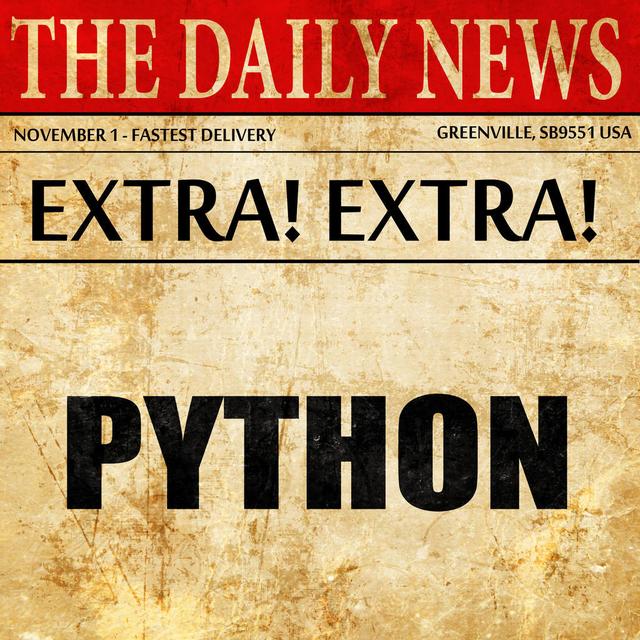前言:
今天元宵节,祝福大家元宵节快乐。
今天在元宵节给各位朋友分享一下python时间模块。
我们在开发中经常会与时间打交道,如:获取事件戳,时间戳的格式化等,这里简要记录一下python操作时间的方法。

ython中常见的处理时间的模块:
- time:处理时间的模块,如获取时间戳,格式化日期等
- datetime:date和time的结合体,处理日期和时间
- calendar:日历相关的模块,如:处理年历/月历

time模块介绍
说明:time模块主要讲解如下内容:
- 1.时间戳 --> 时间元组格式(time.struct_time) --> 日期字符串
- 2.日期字符串 --> 时间元组格式(time.struct_time) --> 时间戳
- 3.获取当前时间的分钟/秒
- 4.获取整分钟/整小时时间戳
1.时间戳 --> 时间元组格式(time.struct_time) --> 日期字符串
- 时间戳 --> 时间元组格式
time.localtime(timestamp) # 参数timestamp为秒级时间戳 - 例子:
import timetime_tuple = time.localtime(time.time())print time_tuple # time.struct_time(tm_year=2019, tm_mon=1, tm_mday=30, tm_hour=11, tm_min=29, tm_sec=33, tm_wday=2, tm_yday=30, tm_isdst=0)time.strftime(format, p_tuple=None):format:格式化的日期样式;p_tuple:时间元组
例子:
time_format = time.strftime("%Y-%m-%d %H:%M:%S", time_tuple)print time_format # 2019-01-30 11:48:07def timestamp_format(timestamp): """ :brief 时间戳格式化 :param timestamp: 时间戳 :return: 格式化后的日期 """ return time.strftime("%Y-%m-%d %H:%M:%S", time.localtime(timestamp))2.日期字符串 --> 时间元组格式(time.struct_time) --> 时间戳
- 日期字符串 --> 时间元组
time.strptime(string, format) # string:日期字符串,format:该日期字符串对应的格式化格式 - 例子:
import timetime_str_to_tuple = time.strptime("2019-01-30 11:48:07", "%Y-%m-%d %H:%M:%S")print time_str_to_tuple # time.struct_time(tm_year=2019, tm_mon=1, tm_mday=30, tm_hour=11, tm_min=48, tm_sec=7, tm_wday=2, tm_yday=30, tm_isdst=-1)time.mktime(p_tuple):p_tuple:时间元组例子:
time_tuple_to_timestamp = int(time.mktime(time_str_to_tuple))print time_tuple_to_timestamp # 结果:1548820087- 封装成方法
def time_str_to_timestamp(date_str, format): """ :brief 将字符串日期转换为时间戳 :param date_str: 日期字符串,如:2019-01-30 11:48:07 :param format: 日期字符串对应的格式化格式,如:%Y-%m-%d %H:%M:%S :return: 时间戳 """ return int(time.mktime(time.strptime(date_str, format)))3.获取当前时间的分钟/秒
- 获取当前时间戳
timestamp = int(time.time())- 获取当前时间的秒
seconds = timestamp % 60print "seconds:{}".format(seconds)- 获取当前时间的分钟
minute = (timestamp - seconds) % (60 * 60)print "minute:{}".format(minute / 60)
4.获取整分钟/整小时时间戳
- 思路:
先除以对应的进制值取整,得到舍弃余数部分的整数,然后再乘以对应的进制值
one_minute = 60 # 一分钟one_hour = one_minute * 60 # 一小时whole_minute = int(timestamp / one_minute) * one_minutewhole_hour = int(timestamp / one_hour) * one_hourdatetime模块介绍
datetime模块中常见的类:
- datetime.date:处理日期
- datetime.time:处理时间
- datetime.datetime:处理日期和时间
- datetime.timedelta:处理时间差
说明:datetime模块主要讲解如下内容
- 1.时间戳 --> datetime时间格式 --> 日期字符串
- 2.日期字符串 --> datetime时间格式 --> 时间元组格式(time.struct_time) --> 时间戳
- 3.时间差的使用,根据当前时间获取前N天的时间
1.时间戳 --> datetime时间格式 --> 日期字符串
- 时间戳 --> datetime时间格式
datetime.datetime.fromtimestamp(timestamp) 参数timestamp:时间戳
- 例子
import time, datetimedatetime_type = datetime.datetime.fromtimestamp(time.time())print type(datetime_type) # datetime.datetime.strftime(format) format:日期字符串对应的格式化格式例子:
datetime_format = datetime_type.strftime("%Y/%m/%d %H:%M:%S")print datetime_format # 2019/01/30 16:44:012.日期字符串 --> datetime时间格式 --> 时间元组格式(time.struct_time) --> 时间戳
- 日期字符串 --> datetime时间格式
datetime.datetime.strptime(date_str, format) date_str:字符串日期 format:日期字符串对应的格式化格式 - 例子:
datetime_type = datetime.datetime.strptime('2019/01/30 16:44:01', '%Y/%m/%d %H:%M:%S')print type(datetime_type) # # print datetime_type.timestamp()print time.mktime(datetime_type.timetuple())datetime.datetime.timetuple(): datetime转换为时间元组例子:
datetime_type_to_timestamp = int(time.mktime(datetime_type.timetuple()))print datetime_type_to_timestamp3.时间差的使用,根据当前时间获取前N天的时间
datetime.timedelta(days, seconds, microseconds, milliseconds, minutes, hours, weeks) 参数说明:
- days:天
- seconds:秒
- microseconds:毫秒 1秒 = 10^3 毫秒
- milliseconds:微秒 1秒 = 10^6 微秒
- minutes,分钟
- hours:小时
- weeks:星期 1weeks = 7days
- 例子:
day_timedelta = datetime.timedelta(days=1) # 获取1天的时间值forward_datetime = datetime.datetime.today() - day_timedelta # 获取前一天的datetime值print forward_datetimecalendar模块介绍
说明:
这里介绍一下使用month(year, month)方法打印出某年某月下的月历时间
- 例子:
import calendarcal = calendar.month(2019, 1) # 打印出2019年1月的月历print cal









)
...)





)

